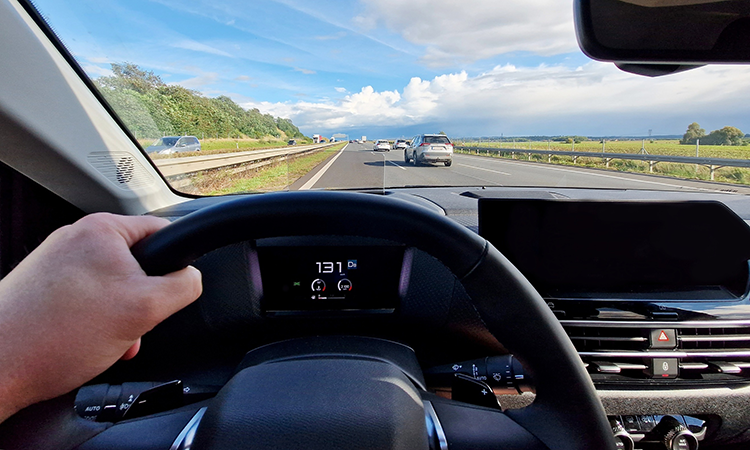Amid the close-to-100 common business-related tax deductions available to us as massage business owners, the three related to travel and mileage are both common and commonly confused.
As much as we would like it to be as simple as “I travelled from here to there so all that mileage is eligible,” it is slightly more nuanced than that.
The 3 Types of Travel and Mileage Tax Deductions for Massage Therapists
To begin with, there are actually three types of transportation deductions, each with their own rules: commuting, local travel and out-of-town travel. Knowing which kind of traveling you are doing is the first thing you have to know. (This applies only to the self-employed, which includes independent contractors. It does not apply to employees.)
1. Commuting
Commuting is when you travel on a predictable (even published) schedule to the same location to do your work. For example, if I see clients Tuesday, Wednesday, and Thursday from 9 am – 4 pm every week at the same location, that is commuting.
The rule for commuting means you can’t take a mileage deduction for commuting. That’s going to come as a shock to many of you since you (reasonably) assume that if you’re driving to your office to see clients, it’s business travel and you can deduct the mileage. Sadly, if you’re doing that on a regular schedule you probably can’t deduct the mileage.
2. Local Travel
Local travel is non-commuting travel that also isn’t out-of-town travel. This is your daily running around and could include going to the bank, the laundromat, a professional society meeting, a mobile massage client, etc.
The rule for local travel is simple: between two business stops. What is a business stop? It’s anywhere you stop with a business intent.
Why is business intent important? Because a location—for example, the bank—could be a business stop if you’re there for a business purpose. If you’re there to take care of your own banking needs, it’s not a business stop.
If you manage your business from your house (store files, do research, receive professional magazines, it’s the address of record for your state licensing board, etc.), is your home a business stop? Yes, if you take a home office deduction on your taxes. If you don’t take this deduction, your home is not a business stop.
What would this look like?
Imagine that you drive from your home (but you don’t take a home office deduction) to a client’s house, then to the grocery store to get your personal groceries, then you stop by the bank so you’ll have change for some clients who like to pay with cash, then you drive home.
In this example, you have zero business mileage (see Fig. 1).
• Home to the client: the client is a business stop but home isn’t.
• Client to the grocery store: the client is a business stop but the grocery store isn’t because you were doing your personal grocery shopping.
• Grocery store to the bank: the bank is a business stop but the grocery store isn’t.
• Bank to home: the bank is a business stop but your home isn’t.

You had no mileage between two business stops.
If we make two changes, though, the picture changes significantly (see Fig. 2):
• Take a home office deduction, making your home a business stop
• Go to the grocery store after you go to the bank

In this case, you can deduct the mileage from your home to the client and then to the bank. You still can’t deduct the portion of this trip from the bank to the grocery store to home but you’re further ahead than you were in the first example.
While many of us make these trips by personal car, the same rule applies if you’re using public transportation, ride share, etc. If it’s between two business stops, it’s a deductible transportation expense.
3. Out-Of-Town Travel
Out of town travel is when you leave your tax home for long enough that sleeping out of town makes sense (often 12 hours or more). What the heck is a tax home? You get to choose it! It’s the boundaries in which you do most of your local travel and commuting.
If you take a look at a map, you’ll probably see that there are easily defined boundaries for where you do most of your local travel for business. In a large city, it might be a neighborhood. If you live in a smaller city or town, it might be the town limits or possibly the county.
If you live in a rural area, it might be bounded by specific roads or the county. Again, you get to decide—but whatever you decide, you need to be consistent in its use.
The one exception to this is Washington DC. If you live or work in Washington DC, the city limits are automatically your tax home.
For example, imagine I drive to a city that’s an hour away for a CE class that lasts 6 hours. Even with stopping for dinner, I’ll only be out of town for about 9 hours. The expenses are still deductible but the rules for local travel apply.
On the other hand, if the class location is two hours away and the class is eight hours long, that’s 12 to13 hours out of town, so I’d probably spend the night and the out-of-town rules would apply.
The rule for out-of-town travel is broader than it is for commuting and local travel. Out-of-town travel expenses are deductible from portal to portal. That means your deductible business expenses start when you leave your residence (whether you take a home office deduction or not) and continue until you return home.
While local travel deductions are almost exclusively confined to mileage, public transit and rideshare, out-of-town travel expenses include more. For example:
- Airfare
- Mileage
- Tolls
- Lodging
- Dry cleaning (while away, not to prepare for the trip)
- Telephone, internet and fax costs
- Tips
- Transportation (rideshare, public transportation, etc.)
- Baggage fees
- Rental car plus any associated insurance and gasoline for that vehicle
- Parking
- Meals
Let’s look at two examples:
First, let’s say I fly to another state to take a CE class. My deductible business travel expenses might include:
- Ride share to the airport
- Fees for checking a bag
- A snack or meal at the airport
- Airfare
- Snacks on the plane
- Wifi on the plane
- Rental car
- Tolls
- Hotel
- Parking at the hotel
- Meals
- I spill oil on myself and have to go to a laundromat: detergent and washer/dryer are deductible
- Gas for the rental car when I return it to the airport
- Fees for checking my bag
- A snack or meal at the airport
- Ride share home from the airport
Second, let’s look at a slightly more complicated example: combining business travel and vacation travel.
For example, you decide to attend a conference in Las Vegas and afterwards drive to the Grand Canyon. If you are ever audited (which is when all these deductions get tested) the IRS will look at what your primary intent was, business or vacation?
If you plan the conference travel first, which they’ll see by what you paid for first, what you registered for first, etc., then the trip’s primary purpose was business. The biggest advantage to that? Your airfare, which is often the largest expense, is a business deduction. If the IRS concludes that your primary intent was vacation and the conference was tacked on, you can’t take the airfare as a business deduction.
What about things like hotels and meals? Money you spent while at the conference is a business deduction. Once the conference is over and you leave Las Vegas, now the money you spend is vacation and it’s not deductible.
Two More Points
There are two final, very important points I need to add:
First, you have more than one choice about how to take mileage and out-of-town travel deductions. What I have explained here are the simplest and most common. If you want to know more, I recommend the book I co-authored with Margo Bowman, “Can I Deduct That?” It’s updated every year and is available on Amazon.
Second, I am not the final authority on your taxes and deductions. Tax laws change every year. Your situation is unique to you. If you are not sure what’s right for you, contact a tax professional.

About the Author
Kelly Bowers is the owner of the Healing Arts Business Academy, which helps massage therapists set up their private practice and navigate the first two years in practice. She is an author, presenter at regional and national conferences, an instructor in professional training programs, and an NCBTMB-approved provider of continuing education. She retired from hands-on bodywork in 2022. She lives in Durham, North Carolina. (NC 16669)
